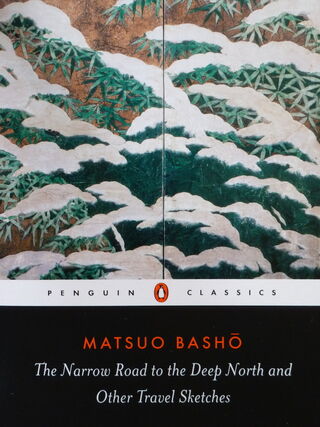Friends
The Bookshop on the Corner
An aimless stroll is not always what it seems.
Posted September 30, 2014
Last week I had the great good luck to find myself in New York’s Greenwich Village with four hours to kill before my train back to Pennsylvania. It was perfect strolling weather, temperate and slightly overcast, so I sauntered down the narrow, one-way streets, looking in the windows of neighborhood restaurants and imagining what it would be like to live in this storied, offbeat part of Manhattan. But what I really wanted was to find an old-fashioned neighborhood bookstore.

I had a small map of Manhattan and an equally small guidebook in my shoulder bag, but I didn’t want to break my what-if-I-lived-here reverie by pulling them out, consulting them and advertising to one and all that I was a bumpkin tourist. Instead, in the manner of optimistic (or foolish) travelers everywhere, I resolved to let my feet guide me to my unknown destination. With independent bookstores an increasingly endangered species, I had some hesitation that my quest would be successful. But still I pressed on, naively hopeful that a bookstore would suddenly appear before me, shimmering like a verdant oasis in a parched desert landscape.
I was briefly distracted by a restaurant named Gene’s, which had an inviting, old-fashioned bar just behind its front window and which looked like it had been a fixture on West 11th Street for decades. (Since 1919, I found out later.) For a moment I considered going inside, ordering a glass of wine at the bar and seeing if there was a table toward the back occupied by Guys-and-Dolls gents in rumpled suits with loud ties and names like Nicely Nicely and Harry the Horse. But then I reminded myself that I didn’t want to time-travel back to the setting of a 1950s Frank Loesser musical; I wanted to find a bookstore.
My feet pulled me along, following a map of their own making, and within a few minutes I was pausing again, this time to squint in amazement as my literary oasis came into view.
It was a small shop with a red awning, occupying a prime Greenwich Village location at the corner of West 10th Street and Waverly Place. But I didn’t notice that at first. What I noticed was that I had indeed miraculously found a storefront whose windows were full of books, top to bottom and left to right. Offering silent thanks to the gods and goddesses of travel serendipity, I crossed the street and stepped through the shop’s open front door.
I found myself in an enchanting space, filled with books neatly displayed, shelved or stacked on bookshelves and on tables. In that cozy room I counted two friendly and knowledgeable employees and two or three other book-loving customers. I felt the familiar sense of happiness mixed with anticipation that I always experience in bookstores like this one. So many new treasures to discover, and so many old friends to encounter again.
Perhaps I should confess here that I have loved books since I was a small child, and my devotion to them has only increased over time. I majored in English in college, and my love of reading even led me to pursue a Ph.D. in English literature before I reconsidered the prospect of spending my life in the tangled groves of academe. In my various moves around the country, I have carted boxes and boxes of books with me; I can’t imagine living in a home without several bookcases filled with well-thumbed favorites and new finds. As more people turn to reading on electronic screens, I defiantly crack open my hardback and paperback books—in public! In broad daylight! I am a stubborn, battery-free eccentric in a sea of smartphones and tablets, Nooks and Kindles.
My personal history may explain why I viewed this small bookshop in Greenwich Village as a kind of temple or shrine. The fact that I was more or less propelled toward it like iron filings to a magnet added to my sense of reverence. I began to consider the possibility that a higher power might have guided my steps there—even if this power were merely the vigilant guardian of the starry literary realm and not the vast universe.
Somewhat shyly, I started to examine the titles of the books on the shelves closest to the door. I noticed a paperback version of Laura Hillenbrand’s best-seller “Unbroken;” with some guilt, I remembered that I had the hardback version at home and had not yet finished it. (These lapses occur occasionally, even among the most devoted book lovers.)
As I made my way slowly through the shop, I found several books about Greenwich Village, including a 2008 memoir by Suze Rotolo, whose youthful relationship with an ambitious troubadour was immortalized in the 1963 album, “The Freewheelin’ Bob Dylan.” The cover photo on both the album and the memoir shows the young Dylan and Rotolo walking arm in arm down a slushy Greenwich Village street located not far from where I stood browsing.
On the shelves at the back of the shop, I was happy to find several books by two of my favorite authors, Amy Tan and Michael Ondaatje. Some were novels I had already read, and others were works I made a mental note to add to my reading list. There was a section of books on writing, and an entire back corner devoted to a bright column of travel guides. I restrained myself from even getting close to them, so as not to be overwhelmed by wanderlust.
Adding to the shop’s appeal were a chair and a few step stools where customers could sit to page through the books they found. To make my experience even more memorable, during my visit an electrician was working on the ceiling fan at the front of the shop. For him to do his work safely, the overhead lights had to be turned off periodically. When that happened, the only illumination in the shop came from the open front door, the scant sections of the windows not blocked by display bookshelves, and several green-shaded lamps affixed here and there to the bookshelves in the store. To me, the dim light made the act of reading books on paper seem even more deliciously illicit.
I was looking for a small book—one that would not weigh me down before I boarded my evening train. But I also wanted a book that would temporarily spirit me away from the frantic, murderous, techno-crammed world of late September 2014. I found just what I wanted in “The Narrow Road to the Deep North and Other Travel Sketches,” a slim paperback volume of writings by the 17th-century Japanese poet Matsuo Basho.

To be perfectly honest, it was the book’s beautiful cover art—a detail from an early 17th-century Japanese screen painting of bamboo trees heavy with snow—and the blurb on the back that sold me on this book. The blurb explained that, when Basho wrote the book, “. . . he was an ardent student of Zen Buddhism, setting off on a series of travels designed to strip away the trappings of the material world and bring spiritual enlightenment. He wrote of the seasons changing, of the smell of the rain, the brightness of the moon and the beauty of the waterfall, through which he sensed the mysteries of the universe.” Here, I thought, was the perfect literary antidote to the crushing realities of today’s world.
After I paid for my find at the shop’s counter, I asked the helpful sales clerk if she could recommend a neighborhood café where I could sit with my book and a cup of tea. One block down Waverly Street was just such a place—a nearly empty restaurant where, at this late-afternoon hour, a waiter was happy to offer me a pot of tea and a table by a window. In peaceful solitude, I read about Basho and savored some of his timeless, 17-syllable haiku, in Japanese transliteration and in English translation:
Furuike ya, kawazu tobikomu, mizu no oto.
Breaking the silence
Of an ancient pond,
A frog jumped into water—
A deep resonance.
As I opened the book at the café, I saw that the sales clerk had thoughtfully included a bookmark with my purchase, which is how I learned the name of the bookstore I had happened upon. It is Three Lives & Company, and the bookmark noted that it has been in business since 1978. The illustration on the bookmark, however, showed women in long dresses and men in suits and bowler hats on the sidewalk in front of the store—attire more appropriate to the 1890s or early 1900s than to the present day. There was a bicycle in the drawing, too, but nary an automobile. I smiled to realize that the illustration itself was a window into an imagined world, like so many of the books for sale in the shop.
On the train back to Pennsylvania that night, I pulled out the small Frommer’s New York City guide I had in my shoulder bag; I had to laugh when I saw that, in the “Books” section of its “Shopping A to Z” list, there was an enthusiastic blurb on Three Lives & Company.
If I had taken a few minutes to read the guidebook before I set out on my afternoon stroll through the Village, I would have known precisely where to head. But, given the happy outcome, I much preferred my blind-luck approach. Yes, it could have been just a coincidence, but I will always believe that I was destined to discover that bookstore. And, as a plus, on my way there I found a great neighborhood joint to visit the next time I am in town, with an old-fashioned bar by the window and, just maybe, some real New York characters with colorful names and loud neckwear at a table in the back.
Copyright © 2014 By Susan Hooper




